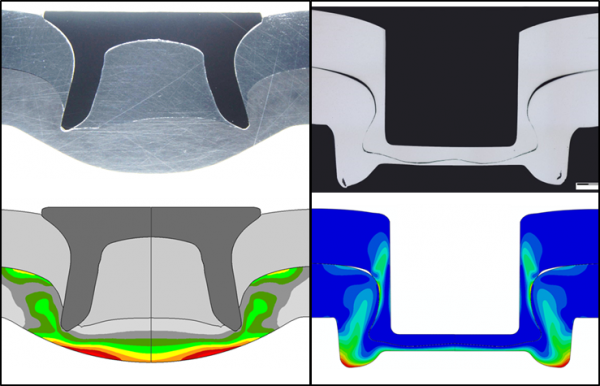Project Summary

The aim of the project was to develop rules and guidelines based on scientific results either (I) how cracks induced by clinching or self-pierce riveting can be avoided or (II) which cracks are acceptable. Therefore, the damage behavior of lightweight materials such as aluminium and magnesium during the clinching and self-pierce riveting process was investigated both experimentally and numerically.
The results from the project can be summarized as follows:
When mechanical joining is used for materials with limited ductility radial and tangential cracks can occur in the closing head of clinching or self-pierce riveting joints depending on the material and the joining parameters. Furthermore, there is a risk for crack propagation between the structural part edge to the joint, when clinching or self-pierce riveting materials with limited ductility near to the part edge. The relationships between joining parameters and the risk for damages in the closing head or part edge are demonstrated in this report and the risk for joining process-induced damages can be reduced by choosing the suitable joining tools.
In all material combinations considered in this project, it could not be observed that the joining process-induced damages in the closing head have a negative effect on the resulting joint strength. This was determined for quasi-static and cyclic strength tests for elementary and hybrid clinching as well as for self-pierce riveting.
In the numerical investigations regarding the damage modeling, it was determined that the damage location as well as the level can be calculated by simple damage models like the one from Cockroft and Latham as well as complex fracture models like the one from Bai and Wierzbicki. However, calculation of crack propagation in the die-sided part for clinching or self-pierce riveting using FEM is only possible to a limited extent. The necessary element deletion leads to distortions in the mesh which often result in a termination of the simulation.
The crack tip opening displacement concept is not applicable for the analysis of cracks within mechanical joining, since the cracks are in the same range of size as the critical crack tip opening displacement and the cracks have to be at least several times larger.
For the aluminium die-cast cold welding has been observed, but not for the magnesium die-cast. With the conducted experiments it was not possible to evaluate the strength of such cold welds.
Regarding suitable methods for quality assurance, thermography and computer tomography show the biggest potential in terms of detecting the cracks inside as well as on the surface of the clinching or self-pierce riveting joints.
The project goal was achieved.

